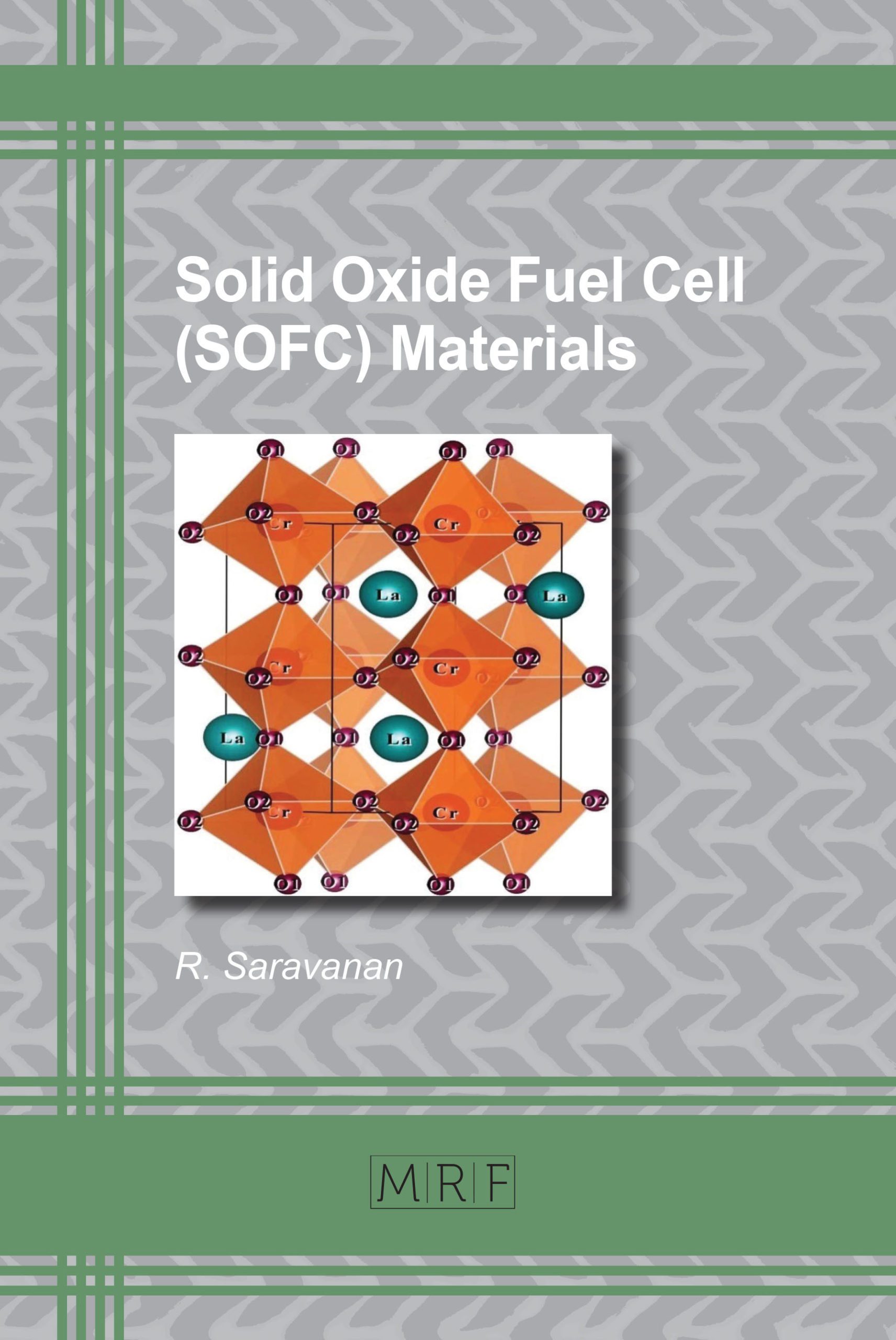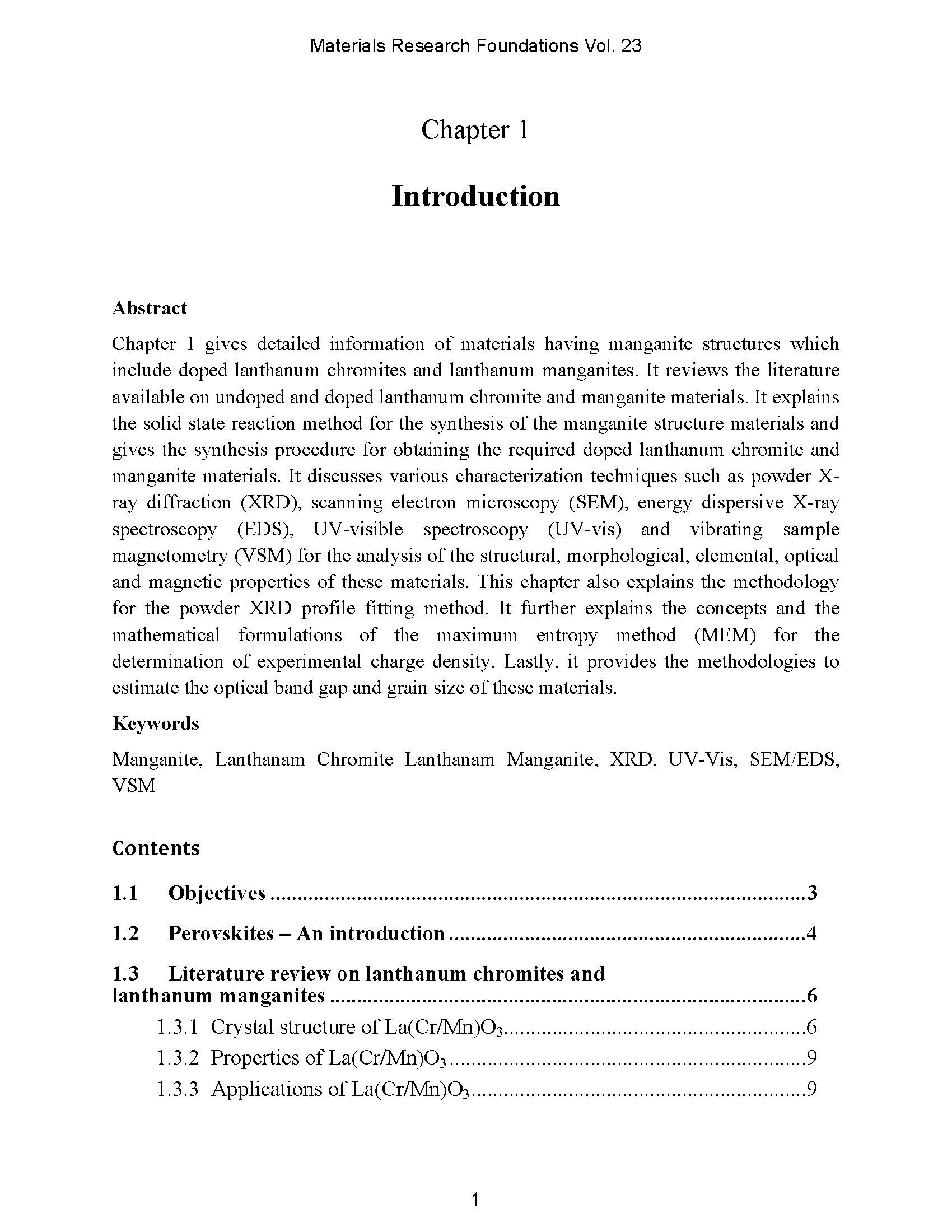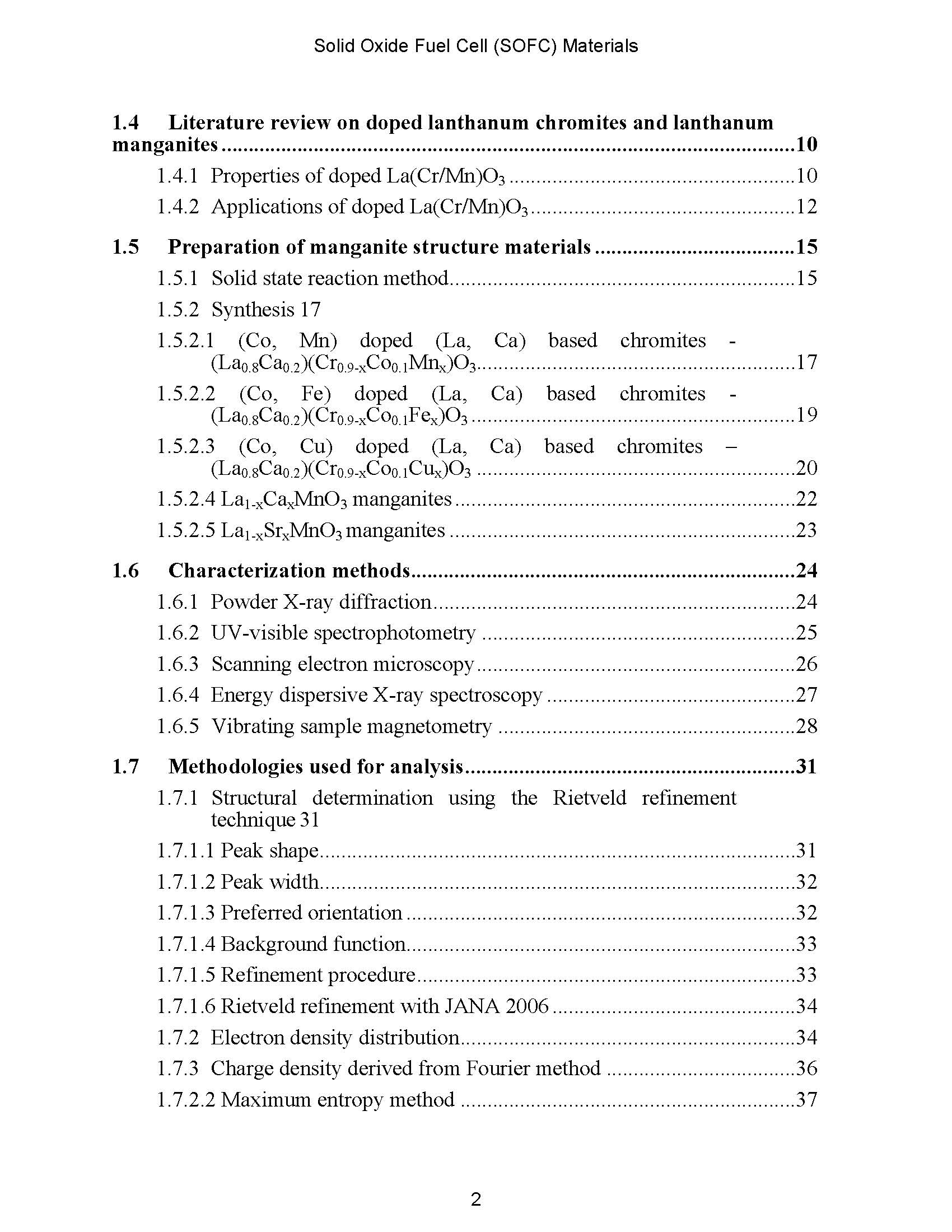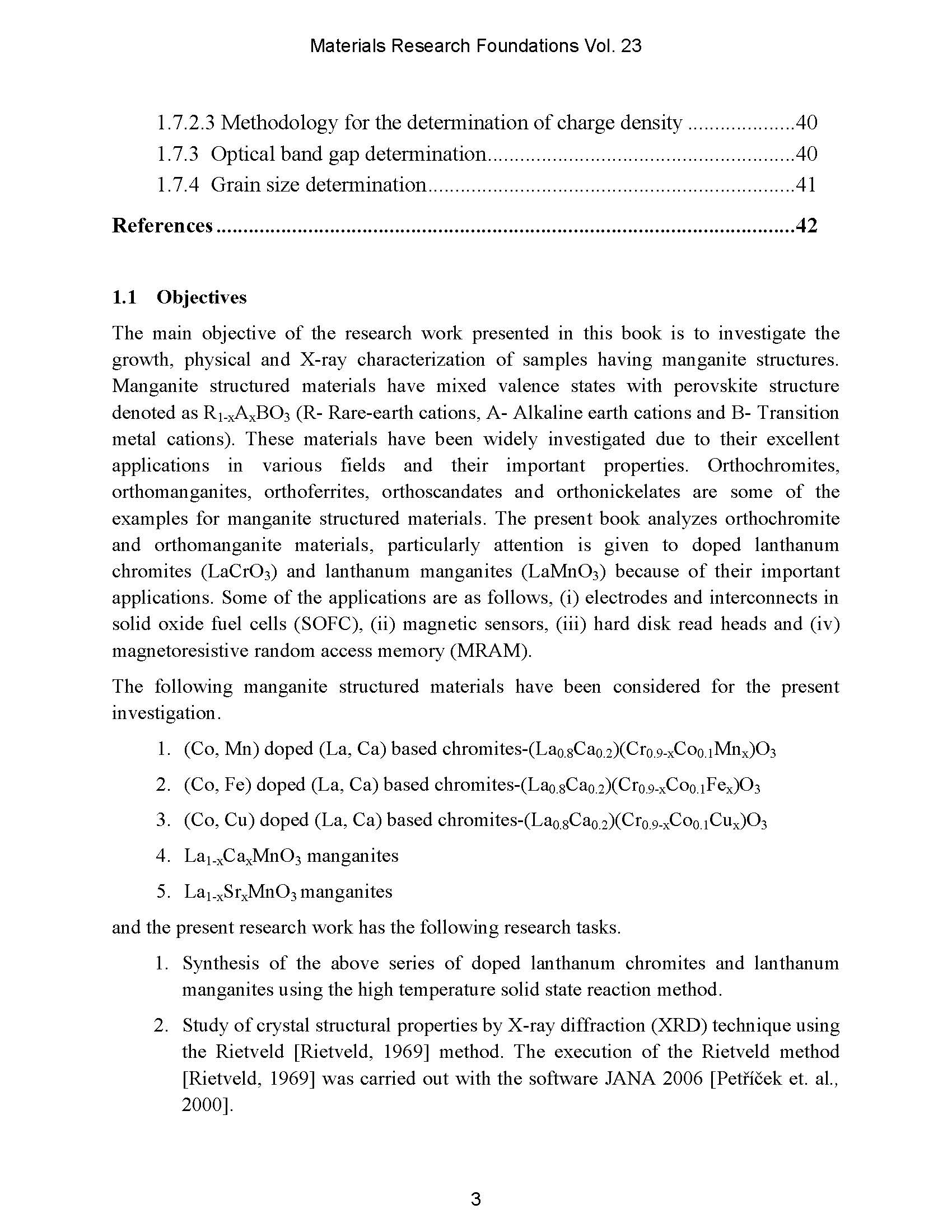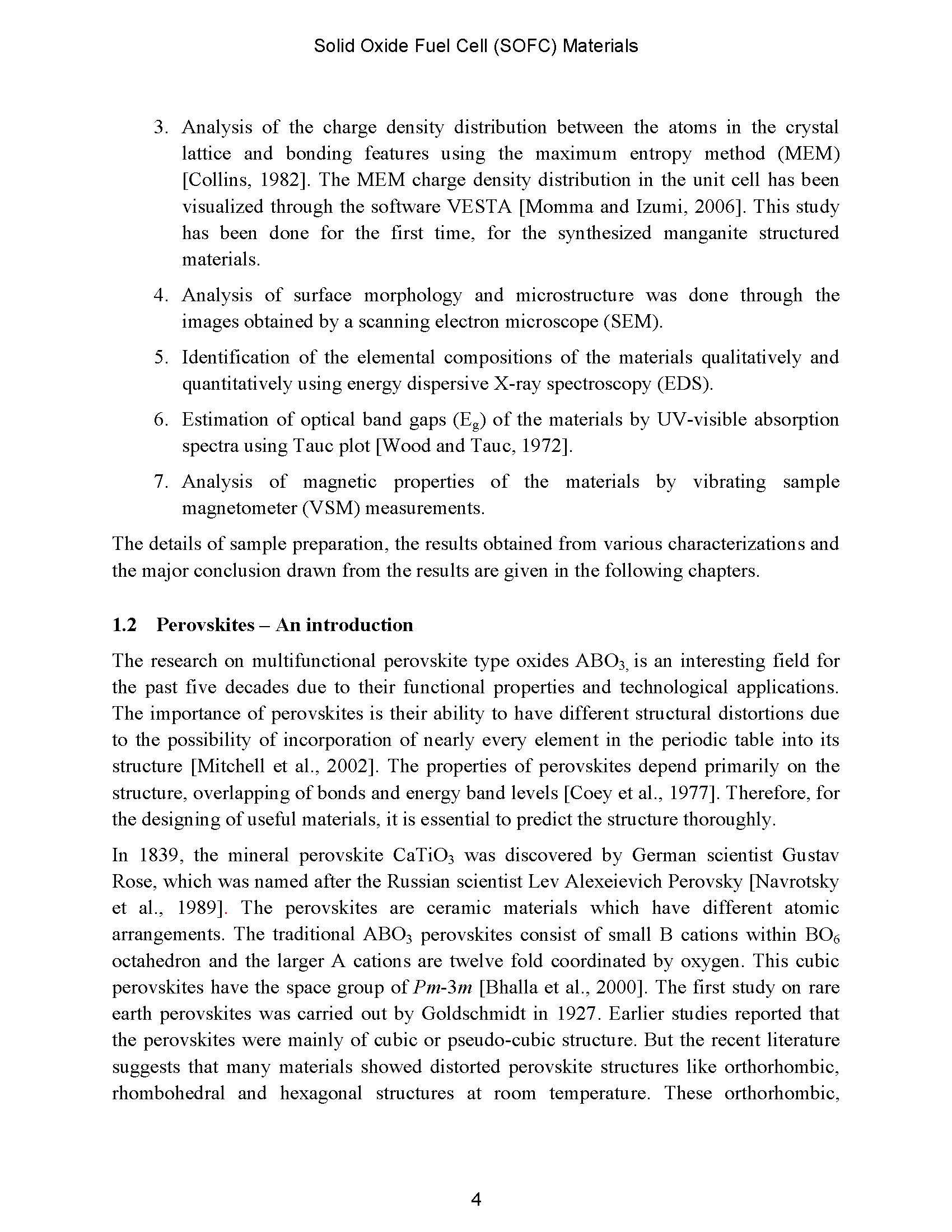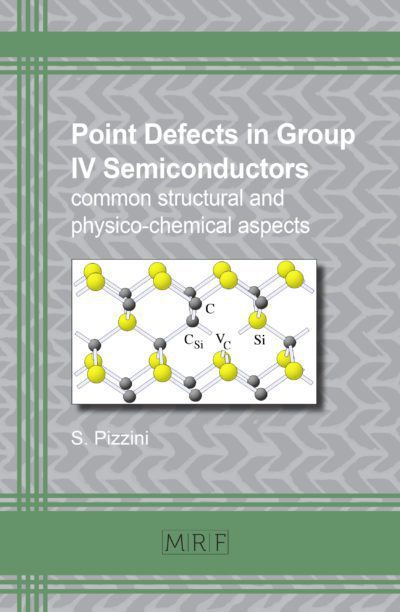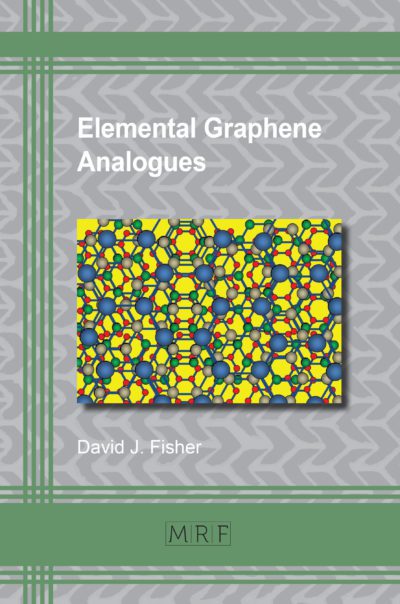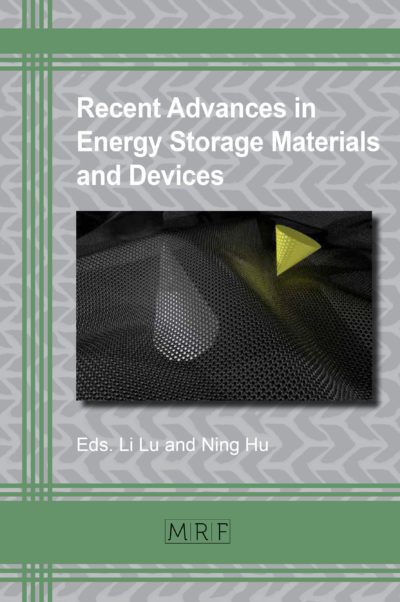Solid Oxide Fuel Cell (SOFC) Materials
R. Saravanan
Materials Research Foundations Volume 23
Publication Date 2018, 182 Pages
Print ISBN 978-1-945291-50-0 (release date January 15th, 2018)
ePDF ISBN 978-1-945291-51-7
DOI: 10.21741/9781945291517
Developing materials for SOFC applications is one of the key topics in energy research. The book focuses on manganite structured materials, such as doped lanthanum chromites and lanthanum manganites, which have interesting properties: thermal and chemical stability, mixed ionic and electrical conductivity, electrocatalytic activity, magnetocaloric property and colossal magnetoresistance (CMR).
These materials have applications in solid oxide fuel cells, high temperature NOx sensors, hard disk read heads, magnetic sensors and magnetoresistive random access memories.
For the first time, the charge density distributions have been studied in these materials as synthesized by high temperature solid state reaction. Charge density analysis is helpful in understanding the physical and chemical properties of materials and in developing optimized structures. The morphological, elemental, optical and magnetic properties of the materials have also been studied.
Keywords
Solid Oxide Fuel Cells, SOFC, Manganite Structured Materials, Lanthanum Chromites, Lanthanum Manganites, Electrocatalytic Activity, Magnetocaloric Property, Colossal Magnetoresistance, High Temperature NOx Sensors, Hard Disk Read Heads, Magnetic Sensors, Magnetoresistive Random Access Memories, Charge Density Distribution
Table of Contents
Preface
Chapter 1 Introduction
Chapter 2 Results Results
Chapter 3 Discussion
Chapter 4 Summary
Keywords
About the author
paperback flyer
eBook flyer
About the Author
Dr Ramachandran Saravanan, has been associated with the Department of Physics, The Madura College, affiliated with the Madurai Kamaraj University, Madurai, Tamil Nadu, India from the year 2000. He is the head of the Research Centre and PG department of Physics. He worked as a research associate during 1998 at the Institute of Materials Research, Tohoku University, Sendai, Japan and then as a visiting researcher at Centre for Interdisciplinary Research, Tohoku University, Sendai, Japan up to 2000.
Earlier, he was awarded the Senior Research Fellowship by CSIR, New Delhi, India, during Mar. 1991 – Feb.1993; awarded Research Associateship by CSIR, New Delhi, during 1994 – 1997. Then, he was awarded a Research Associateship again by CSIR, New Delhi, during 1997- 1998. Later he was awarded the Matsumae International Foundation Fellowship in1998 (Japan) for doing research at a Japanese Research Institute (not availed by him due to the simultaneous occurrence of other Japanese employment).
He has guided eleven Ph.D. scholars as of 2017, and about five researchers are working under his guidance on various research topics in materials science, crystallography and condensed matter physics. He has published around 140 research articles in reputed Journals, mostly International, apart from around 50 presentations in conferences, seminars and symposia. He has also guided around 60 M.Phil. scholars and an equal number of PG students for their projects. He has attracted government funding in India, in the form of Research Projects. He has completed two CSIR (Council of Scientific and Industrial Research, Govt. of India), one UGC (University Grants Commission, India) and one DRDO (Defense Research and Development Organization, India) research projects successfully and is proposing various projects to Government funding agencies like CSIR, UGC and DST.
He has written 8 books in the form of research monographs including; “Experimental Charge Density – Semiconductors, oxides and fluorides” (ISBN-13: 978-3-8383-8816-8; ISBN-10:3-8383-8816-X), “Experimental Charge Density – Dilute Magnetic Semiconducting (DMS) materials” (ISBN-13: 978-3-8383-9666-8; ISBN-10: 3-8383-9666-9) and “Metal and Alloy Bonding – An Experimental Analysis” (ISBN -13: 978-1-4471-2203-6). He has committed to write several books in the near future.
His expertise includes various experimental activities in crystal growth, materials science, crystallographic, condensed matter physics techniques and tools as in slow evaporation, gel, high temperature melt growth, Bridgman methods, CZ Growth, high vacuum sealing etc. He and his group are familiar with various equipment such as: different types of cameras; Laue, oscillation, powder, precession cameras; Manual 4-circle X-ray diffractometer, Rigaku 4-circle automatic single crystal diffractometer, AFC-5R and AFC-7R automatic single crystal diffractometers, CAD-4 automatic single crystal diffractometer, crystal pulling instruments, and other crystallographic, material science related instruments. He and his group have sound computational capabilities on different types of computers such as: IBM – PC, Cyber180/830A – Mainframe, SX-4 Supercomputing system – Mainframe. He is familiar with various kind of software related to crystallography and materials science. He has written many computer software programs himself as well. Around twenty of his programs (both DOS and GUI versions) have been included in the SINCRIS software database of the International Union of Crystallography.

